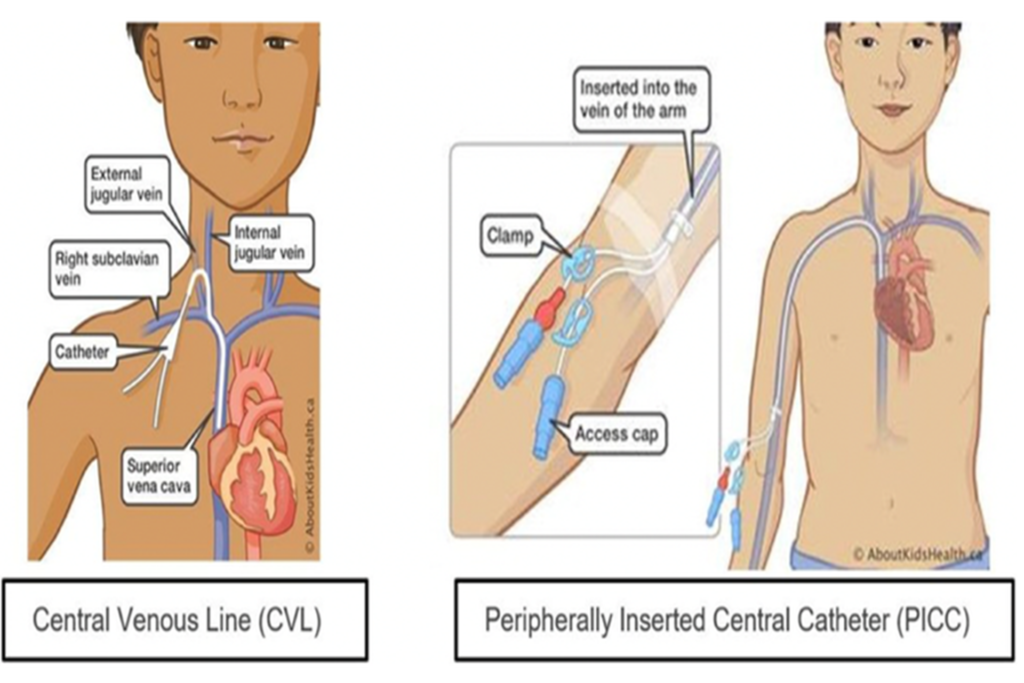
Overview:
Central Venous Line (CVL) Sepsis is a severe bloodstream infection that occurs due to bacterial, viral, or fungal contamination of a central venous catheter. It is a serious complication often seen in critically ill patients who require long-term IV access for medications, fluids, or nutrition.
Causes:
CVL Sepsis occurs when pathogens enter the bloodstream through the central line due to improper handling, prolonged use, or poor catheter maintenance. Risk factors include immunosuppression, prolonged hospitalization, and multiple catheter insertions.
Symptoms:
Patients with CVL Sepsis may experience high fever, chills, rapid heart rate, low blood pressure, confusion, and redness or swelling around the catheter insertion site. If left untreated, it can lead to septic shock and organ failure.
Treatment:
Treatment involves immediate removal or replacement of the infected catheter, administration of broad-spectrum antibiotics, and supportive care such as IV fluids and oxygen therapy. In severe cases, ICU management and organ support may be required.
Precautions:
Proper hand hygiene, sterilization of equipment, timely catheter replacement, and regular monitoring of the insertion site can prevent infection.
Prevention:
Strict infection control measures, including aseptic techniques during catheter insertion and maintenance, are essential to reduce the risk of CVL Sepsis.
For expert care in CVL Sepsis management, visit The KDM Hospital in Lucknow. The hospital offers advanced infection control, budget-friendly options, Ayushman card acceptance, ambulance services, and 24/7 doctor availability.
